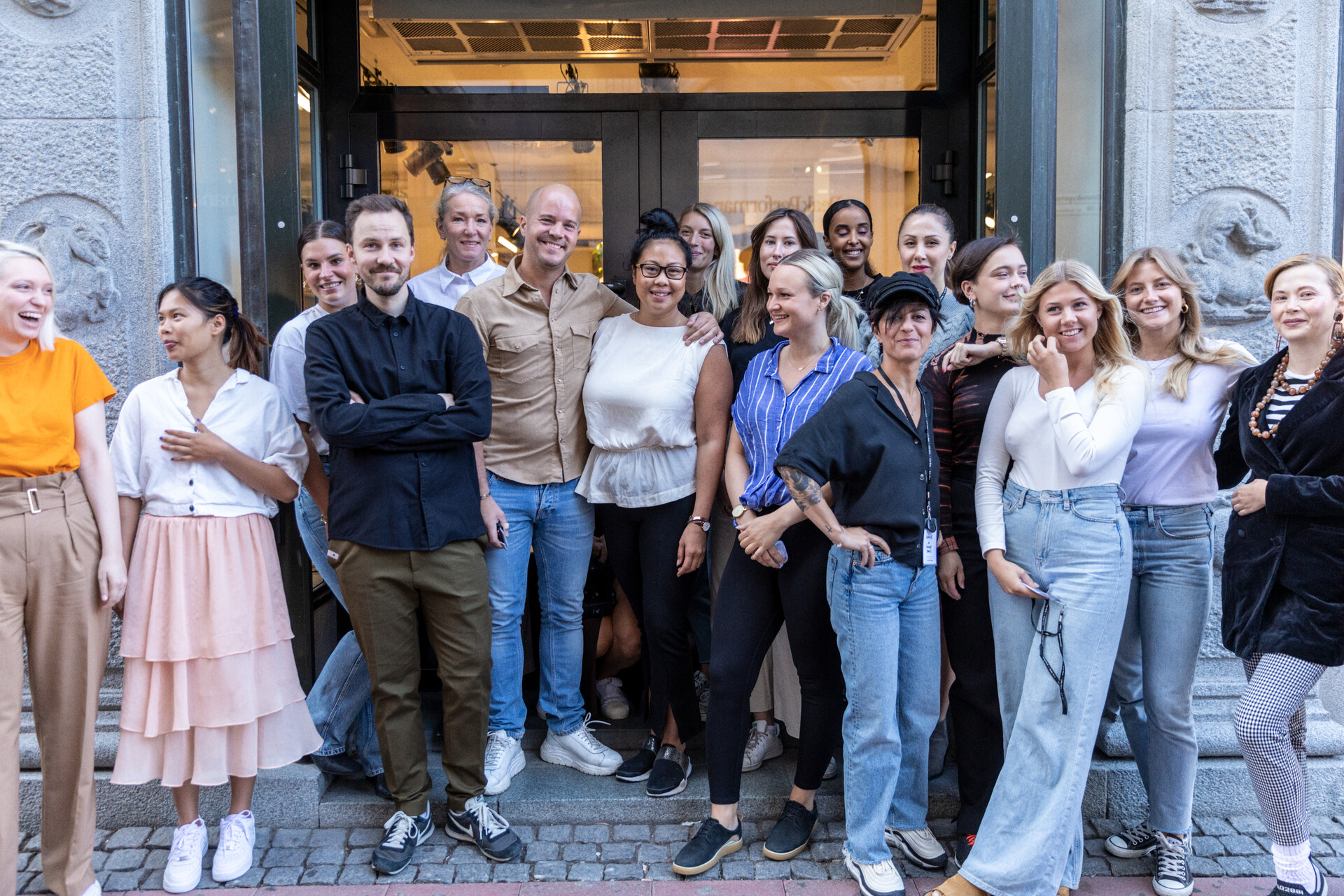Our stories
In the three years since we last spoke, what’s been the biggest success?
We’ve been working hard to secure that our sustainability work is rooted in science. Our climate targets have been verified by the Science Based Targets initiative. At the end of 2023, we had already decreased scope 1 and 2 emissions by 24% and scope 3 by 22%, putting us on track to reach a 56% reduction by 2030 and achieve net-zero by 2040. And we are working towards setting science-based targets for nature.
We continue to swap the materials we source for more sustainable alternatives, such as recycled, regenerative or materials with industry recognised certifications and standards. Last year, 85% of the materials we sourced for our commercial goods were either recycled or sustainably sourced, and we aim to reach 100% by 2030.
And we continue our work with improving conditions for people working in fashion supply chains. As a global fashion retailer of our size and scale, we can and want to have a positive impact on communities that are connected or impacted by our industry.
This is a question we hear again and again, can big fashion brands ever be sustainable?
Yes, I truly believe brands can, and this is what we are working towards at H&M Group right now. People will always need clothes, and the demand for affordable fashion is growing. If population growth continues as expected by the UN, the volume of clothes sold across the world will triple by 2050. This would require the equivalent of 2.3 planets-worth of resources, so it is important we meet this demand with sustainable options.
We want to make sure customers shopping in this price bracket don’t have to compromise and that they can find fashionable clothes that are also sustainable. Circularity is the key. This means selecting design, materials and production methods with a lower impact to produce garments that are used for longer and have several owners over their lifetime. As well as offering these products through circular business models, so our customers can also enjoy fashion in a more circular way.
What is clear though is that our industry has to stop overproduction. It doesn’t make sense for business nor for the planet. With our growing understanding of our customers, we can make sure we only produce what they want to buy and reallocate stock to where there is higher demand. Plus, we can make sure that what they buy has been sourced and produced in a more sustainable way.
How does H&M Group balance growing the business with reducing its impact on the planet?
Growth is still possible, we just need to do it in the right way. It’s not about how many stores we have or how many products we sell, it’s about creating a business that delivers what our customers want in a way that detaches growth from impacting the planet.
We want to make it easier to extend the life of a garment rather than throw it away. To do this we are increasing the amount of recycled materials we source for our products, offering our customers different ways to enjoy fashion without having to buy something new, and taking back textiles at the end of their life to make sure they are recycled into new materials and products.
What’s on your radar for the next 12 months?
We are committed to keeping up our speed and action on climate and resources. On top of this, new legislation is coming that will affect our products and how we do business. It will create a level playing field in our industry and at a time when we need to really start walking the talk, sustainability action will move from being voluntary to mandatory and all brands will have to take action. Ultimately, it will help customers make informed decisions about where they spend their money, as well as accelerating the transformation of our industry.
We have been working hard to understand these regulations and what they mean for H&M Group. Thanks to this, and our long history of working with sustainability, we are in a really good position for when they come into force.
Another item on my radar is innovation. We don’t have all the solutions today, so we are always investigating new ideas and companies working with sustainability and technology that can help us transform our business.
What’s the one thing you would like to see happen that could transform the fashion industry?
Our industry needs to change fast. We need to slash our emissions, use more sustainable materials and make circularity the norm. To do this we need industry level collaboration to encourage innovation, adopt AI solutions, work with policymakers for harmonised legislation and incentives, and to create funds for industry level transformation. If we pooled our experience, knowledge and budgets we could make bigger progress at a faster rate. So, I believe industry level collaboration is key to speed up change.
We can see the difference this approach makes already. Through the Future Supplier Initiative, which is organised by The Fashion Pact, we are working with likeminded brands on a project in Bangladesh to help shared suppliers reduce their emissions. We are currently onboarding suppliers to the project and the next steps will be to identify individual investments for the most impactful abatement measures on a factory level. So, we urge more brands to join forces in strategic levels to see what we can achieve together.


